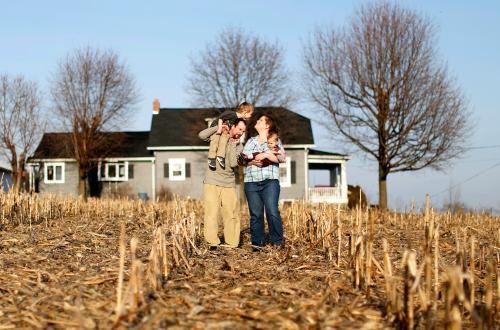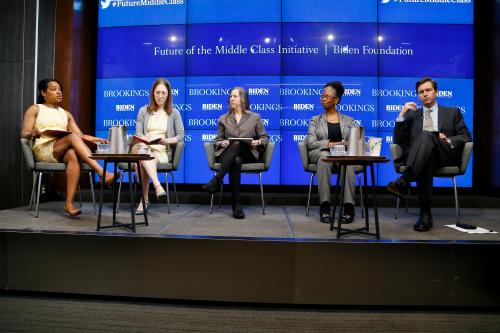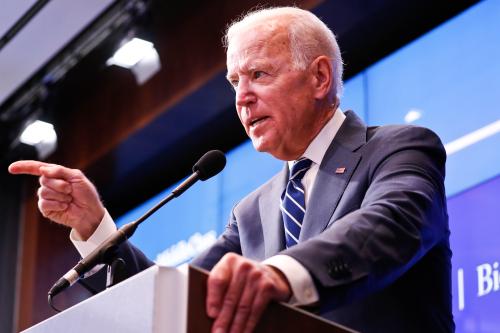To paraphrase William Gibson, the American Dream is alive—it is just not very evenly distributed.[1] Rates of upward mobility vary hugely between different cities and regions of the U.S., as work from the Equality of Opportunity Project shows. The same can be said for the condition of and prospects for the middle class: it really depends where you look.
In a new paper for Brookings Mountain West, “Upward Mobility in the American Mountain West,” I dig into some of the data on mobility, education, and class in the major cities and institutions of the region. Here are some of the findings:
Mountain metros are strongly middle class (especially Salt Lake)
The four biggest cities in the region have a higher proportion of their population from the middle class (here defined as between two thirds and twice the national median[2]):
Mountain metros are racially diverse (especially Las Vegas)
Except for Salt Lake, these metros are also racially diverse. Las Vegas is already “majority minority,” and is the city that looks most like the U.S. of the future. In fact, the diversity found in Las Vegas today reflects the highest similarity (86.5%) to the expected racial and ethnic composition of America in the year 2060, based on Census Bureau projections.
Las Vegas is a melting pot, in terms of marriage
Not only is Las Vegas relatively diverse, it seems on at least some dimensions to have more porous boundaries between racial and ethnic categories. The city has the second-highest proportion of inter-racial marriages in the U.S., for example (after Honolulu), and twice the rate of the U.S. as a whole:
Colleges and universities in the Mountain West cater to different classes
Using data from the Equality of Opportunity Project, we can see that public universities in the Mountain West differ significantly in terms of the populations they serve and the outcomes for their students.
Colorado State University, the University of Utah, all public universities in Arizona, and the University of Nevada, Reno (UNR) all take around half their students from families in the top 20% of the national income distribution, and very few from the bottom 20%. The other four institutions—Utah State University, Boise State University, the University of New Mexico, and the University of Nevada, Las Vegas (UNLV) take many more students from families in the middle 60% of the distribution. UNLV takes more students from the middle 60% (62%) than any other; the University of New Mexico takes the highest proportion from the bottom fifth:
Students from Mountain West colleges have different outcomes
Economic outcomes for the graduates of Mountain West universities also differ. The median individual incomes at the age of 34 for individuals who attended Boise State University, Utah State University, and the University of New Mexico are in the $30,000 to $35,000 range. The other institutions post better outcomes, in the $41,000 to $46,000 range. But note that most of them were taking students from more affluent backgrounds in the first place. Within the University of Nevada system, the median parental income of UNR students was $103,500, compared to $90,400 for UNLV students, while the outcomes for students from the two institutions are virtually identical, with median individual incomes of $45,900 and $41,500, respectively.[3]
Conclusion: Place matters, colleges matter
Upward mobility is an American issue. We face an important policy challenge in creating more opportunities for those from modest or middle-class backgrounds to rise up the income ladder: the main goal of our new Future of the Middle Class initiative. But it is quite clear that upward mobility and building a strong middle class is also a metro issue. Place matters. At the same time, public universities have a key role to play in helping strengthen the middle class and help more people rise into its ranks. This requires city and university leaders to put upward mobility and serving middle class families at the top of their agendas.
[1] Gibson actually said: “The future is already here—it’s just not very evenly distributed.”
[2] Close readers will note that I am doing what I castigate others for: using different definitions of the middle class on different occasions. Not for long, I promise.
[3] Parental income is measured as total household income for the 1980-82 birth cohort when children were 15 to 19 years old, while child income is measured as individual earnings for the 1980-82 birth cohort around age 34 (Chetty et al., 2017).






Commentary
Building a strong middle class in the American Mountain West
June 8, 2018